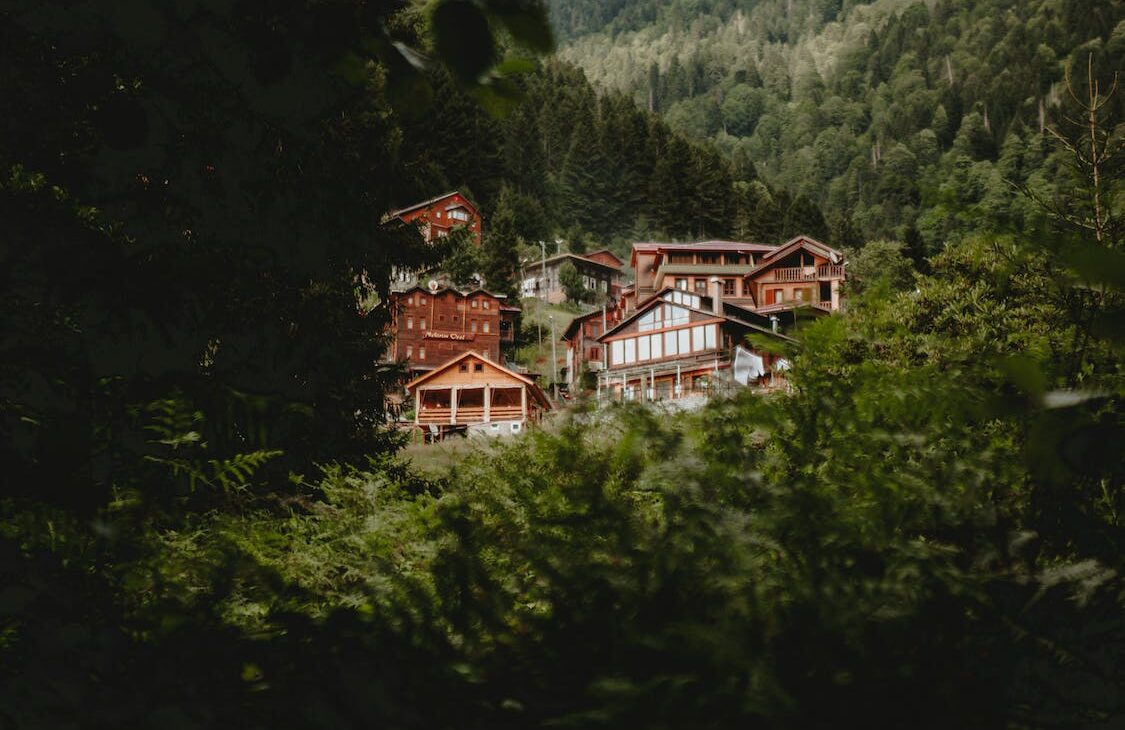In the pursuit of elevating your home’s exterior charm with minimal effort, opting for low-maintenance flower bed ideas for the front of your house is a strategic choice. We understand the importance of a visually appealing front yard that not only captivates but also requires minimal upkeep. Creating a Low Maintenance Flower Bed Ideas Front Of House is a brilliant way to enhance curb appeal without the constant upkeep. Opt for resilient, drought-resistant perennials like Lavender or Coneflowers, adding a pop of color that doesn’t demand excessive watering.
Integrate evergreen plants such as Boxwood for year-round vibrancy, ensuring your front yard remains visually captivating in every season. Strategic grouping based on water and sunlight needs streamlines care, contributing to an efficient layout that minimizes maintenance efforts. Additionally, combat weed growth by applying a generous layer of organic mulch, fostering soil health while reducing the need for regular weeding.
Smart Plant Selection
Smart plant selection is the cornerstone of a thriving and low-maintenance flower bed. Opting for drought-resistant perennials is a strategic choice, as these hardy plants, including varieties like Lavender, Sedum, and Coneflowers, not only add vibrant colors to your garden but also require minimal water attention. Their ability to withstand fluctuating weather conditions makes them a resilient and efficient choice for homeowners seeking a visually appealing front yard without the burden of constant watering.
In addition to drought-resistant beauties, incorporating evergreen plants into your selection is a smart move. Plants like Boxwood and Japanese Holly bring year-round elegance to your flower bed, ensuring that even during the colder months, your garden remains visually striking. The evergreen aspect not only provides structure and consistency but also sets your garden apart from others that may lack this thoughtful and strategic greenery. Smart plant selection is not just about aesthetics; it’s about creating a sustainable and low-maintenance landscape that stands the test of time.
Strategic Layout and Design
The visual impact of your flower bed starts with a thoughtful layout. Consider the existing landscape of your front yard, taking note of architectural features, pathways, and the overall style of your home. Begin by sketching a rough plan, envisioning the placement of each plant. Aim for a balanced composition, mixing colors, heights, and textures to create an eye-catching arrangement. By strategically planning the layout, you not only enhance the aesthetic appeal of your front yard but also make maintenance more manageable. A well-designed flower bed minimizes the need for constant rearrangement and allows the natural beauty of the plants to shine.

Efficiency in gardening comes from understanding the unique needs of each plant. Grouping plants with similar water and sunlight requirements not only simplifies your care routine but also promotes healthier growth. Consider the sunlight exposure each area of your flower bed receives throughout the day, and position plants accordingly. This strategic grouping not only reduces the time spent on adjusting watering schedules but also ensures that each plant thrives in its ideal conditions. A well-organized flower bed not only minimizes maintenance efforts but also creates a cohesive and visually appealing landscape.
Evergreen Elegance
Achieving evergreen elegance in your front yard entails the strategic inclusion of perennial plants that maintain their allure throughout the year. Opt for timeless choices such as Boxwood or Japanese Holly, which not only provide structural integrity to your flower bed but also contribute to a consistently vibrant landscape, even in the colder months. The enduring greenery of these plants ensures that your front yard remains an eye-catching focal point, setting it apart from others that may lack this thoughtful, year-round appeal.
In addition to their visual impact, evergreen plants play a crucial role in minimizing maintenance efforts. Their resilience and adaptability reduce the need for constant replanting, offering a sustainable and low-maintenance solution for a front yard that exudes elegance. Embrace the enduring charm of evergreens to create a landscape that not only captivates at first glance but continues to impress with its timeless beauty, outshining other gardens in both aesthetics and practicality.
Efficient Layout and Design
Crafting an efficient layout and design is pivotal in the pursuit of a low-maintenance and visually striking flower bed for the front of your house. Begin by strategically grouping plants based on their water and sunlight requirements, fostering an environment where each plant thrives without excess attention. This not only streamlines care but also contributes to a cohesive and visually appealing arrangement that catches the eye. Utilizing the Mermaid syntax diagram provided above, you can visually map out the relationships between drought-resistant perennials and evergreen plants, ensuring a well-balanced and aesthetically pleasing composition.
Efficiency in design extends beyond plant placement. Consider the overall shape and structure of your flower bed to maximize visual impact and simplify maintenance. Implementing clean lines and defined borders not only adds a polished touch to your landscaping but also facilitates easy upkeep. By incorporating these design principles, your low-maintenance flower bed becomes a harmonious blend of functionality and beauty, setting it apart from competitors in both aesthetics and ease of care.
Weed Control Strategies
Effectively controlling weeds is paramount for maintaining a pristine and low-maintenance flower bed. One highly efficient strategy is the application of organic mulch. By generously covering the soil around your plants, mulch acts as a protective barrier, inhibiting weed growth and reducing the need for regular weeding sessions. Moreover, mulch contributes to the overall health of the soil by retaining moisture, regulating temperature, and promoting nutrient retention. This dual-purpose approach not only minimizes the time and effort spent on weed control but also enhances the vitality of your flower bed.
Another innovative weed control strategy involves the use of ground covers. Introduce low-maintenance, dense ground cover plants like Creeping Jenny or Sedum between your main plants. These ground covers not only add visual interest but also create a natural weed-suppressing carpet, hindering weed growth by shading the soil. This strategic landscaping not only contributes to an aesthetically pleasing flower bed but also establishes a practical and eco-friendly barrier against weeds, ensuring that your front yard remains effortlessly impeccable.
Benefits of Low-Maintenance Flower Beds
One of the primary advantages of embracing low-maintenance flower beds is the significant time and effort savings in garden maintenance. Traditional high-maintenance gardens often demand constant attention, from frequent watering to meticulous pruning. With low-maintenance flower beds, the need for daily upkeep diminishes, allowing homeowners to enjoy their outdoor spaces without being tethered to demanding gardening tasks. This liberation from exhaustive chores provides the gift of time—time to relax, entertain, or pursue other interests, making low-maintenance flower beds an appealing choice for those seeking a beautiful garden with minimal investment of time and effort.
Investing in low-maintenance flower beds is not just a gift to yourself; it’s an investment in your property’s value. The enhanced curb appeal resulting from a well-kept and aesthetically pleasing front yard can positively impact the perceived value of your home. For homeowners looking to sell, a beautifully landscaped and low-maintenance garden can be a key selling point. Potential buyers are often drawn to the idea of a picturesque outdoor space that requires minimal effort to maintain, making your property stand out in a competitive real estate market. In essence, the benefits of low-maintenance flower beds extend beyond personal enjoyment, offering a tangible return on investment in the form of increased property value.
Automated Irrigation Systems
Implementing an automated irrigation system is a pivotal step towards achieving a low-maintenance and thriving garden. These systems offer precision in watering, ensuring that your plants receive the right amount of moisture without the risk of overwatering or underwatering. Drip irrigation, for instance, involves the slow and controlled release of water directly to the base of plants, minimizing wastage and promoting water efficiency. This not only conserves a precious resource but also reduces the need for constant monitoring, allowing you to enjoy a flourishing garden without the hassle of manual watering.
The benefits of automated irrigation systems extend beyond water conservation. Soaker hoses, another popular choice, distribute water evenly along their length, providing a consistent and gentle watering method. This promotes healthy root development and minimizes the risk of diseases caused by water splashing onto foliage. By incorporating these innovative irrigation solutions, you not only save time and effort but also contribute to the overall sustainability of your garden, positioning it as a well-maintained and efficient outdoor space.
Mulching and Weed Control
In the realm of low-maintenance flower beds, mulching emerges as a silent hero. Beyond its aesthetic contributions, mulch plays a pivotal role in retaining soil moisture, alleviating the need for frequent watering. By forming a protective layer over the soil, mulch acts as a barrier against evaporation, keeping the roots consistently hydrated. This not only promotes the health of your plants but also reduces the overall demand on your time and resources. Choose a mulch that aligns with your garden’s visual theme while embracing its practical function. Whether it’s organic mulch like bark or decorative stones, the right choice can elevate the appearance of your flower bed while contributing to its sustainable and low-maintenance allure.
Mulch isn’t merely a functional necessity; it’s an opportunity to enhance the overall polish of your flower bed. Opt for mulch varieties that not only serve practical purposes like weed control and moisture retention but also complement the aesthetic you envision. For a natural and organic feel, bark or wood chips can be excellent choices, blending seamlessly with the greenery. On the other hand, decorative stones or gravel can add a touch of sophistication to modern landscapes. The key is to strike a balance between form and function, selecting a mulch that not only aids in weed prevention but also contributes to the visual harmony of your low-maintenance front yard. With the right mulch, you not only keep maintenance efforts at bay but also elevate the overall elegance of your outdoor space.
Conclusion
In conclusion, embracing low-maintenance flower bed ideas, from strategic plant selection to efficient layout and the incorporation of automated irrigation systems, is the key to cultivating a front yard that effortlessly stands out. The careful choice of drought-resistant perennials and evergreen plants ensures a vibrant and visually appealing garden that demands minimal attention. Grouping plants based on their needs and employing effective weed control measures further streamlines maintenance, allowing you to enjoy a polished and well-kept front yard without continuous effort.
In the quest for a front yard that effortlessly stands out, the incorporation of low-maintenance flower bed ideas is a game-changer. By strategically selecting plants, optimizing layout, implementing effective weed control, and embracing automated irrigation, your front yard becomes a beacon of beauty without the hassle. Elevate your curb appeal and leave competitors in the digital dust with these actionable and comprehensive insight







